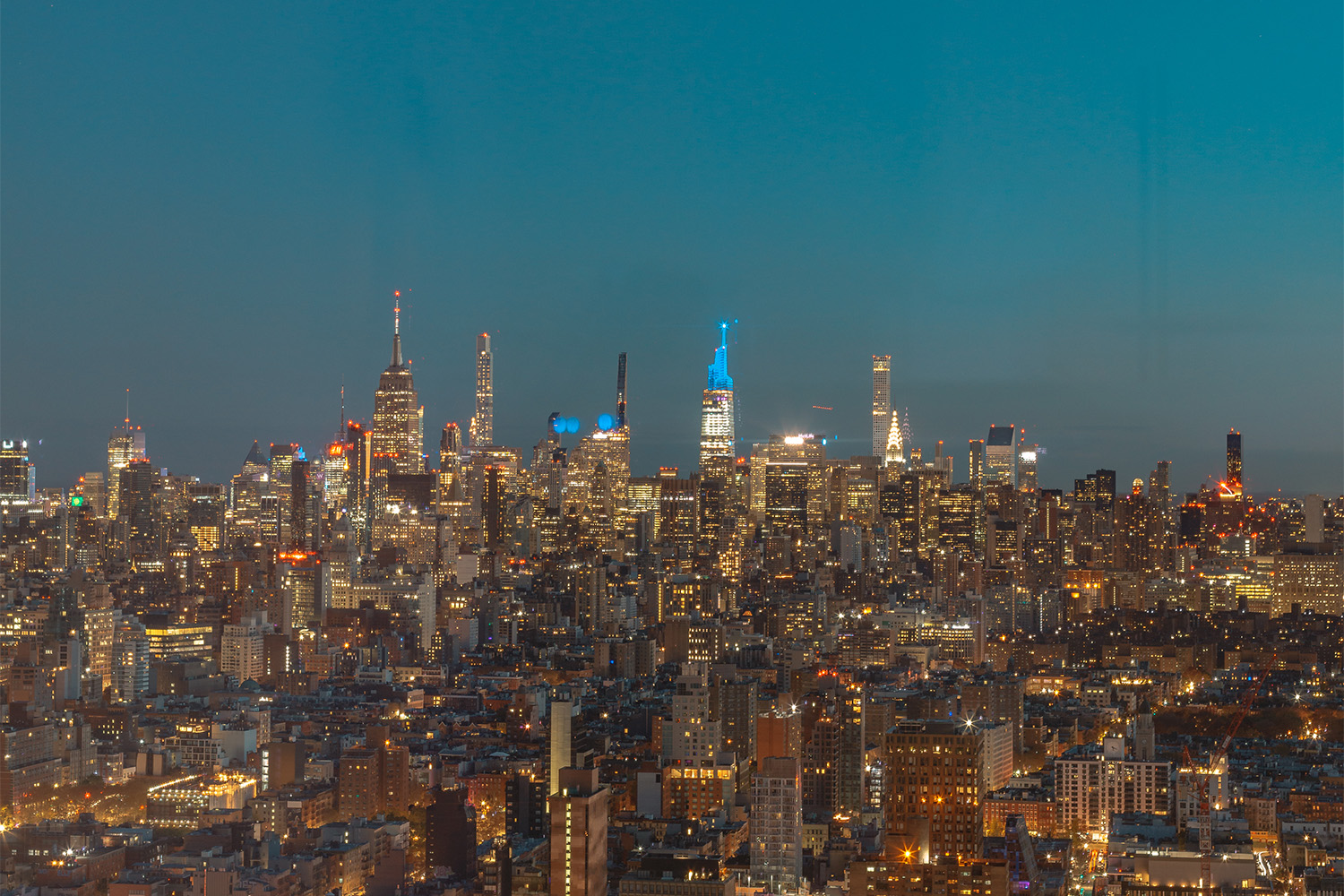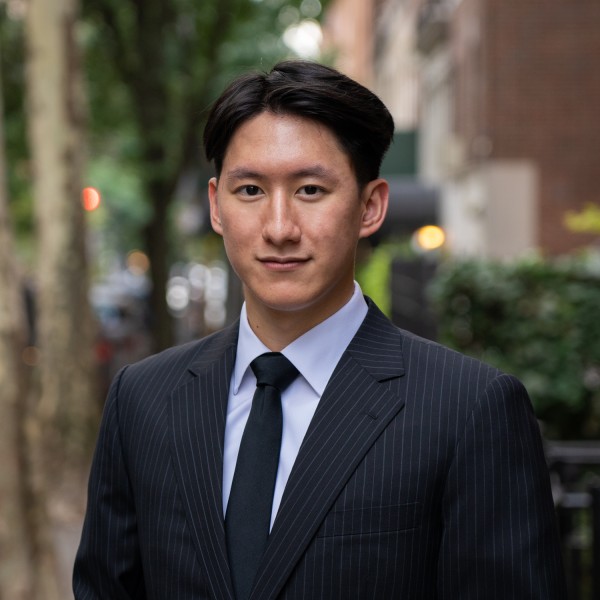Aspirational renting and gentrification: Analysis of rental housing in NYC neighborhoods popular among NYU students
Under the Arch
Aspirational renting and gentrification: Analysis of rental housing in NYC neighborhoods popular among NYU students
Analysis of popular neighborhoods among NYU students show that factors like level of education and age of residents, rather than prices, are more closely related to where students choose to live.
Samson Tu, Magazine Managing Editor | April, 25, 2024

Outside of the 23 dorms at NYU’s Washington Square and Brooklyn campuses, it can be tricky to track down where the university’s around 59,000 students live. But a WSN analysis of U.S. census data tried to find where NYU students tend to rent the most, and determine what these neighborhoods had in common.
The analysis identified popular neighborhoods among students — the parts of Manhattan below 110th Street, and select parts of Brooklyn and Queens such as Bushwick, Bedford-Stuyvesant and Long Island City — and looked at factors like rent, educational attainment, average age and commute time in each area.
Comparing these selected neighborhoods against every other neighborhood in Manhattan, Brooklyn and Queens paints an interesting picture of NYU students’ renting patterns and a tale of gentrification in New York City.
Broadly, the data showed that commute time to campus, the amount of rental units available, educational attainment and average age of neighborhood residents were the stronger indicators of where NYU students most commonly lived. Rent prices, on the other hand, had a negligible effect.
One trend across the board was that residents in the neighborhoods favored by NYU students had a higher median income compared to in the rest of the city. These more popular neighborhoods also house a larger percentage of young and college-educated renters — those under 35 years old and with at least a college degree or equivalent post-secondary degree. The percentage of new renters, defined as renters who moved in during the last two years, in NYU student-favored neighborhoods was double that of the other areas.
The select neighborhoods are also close to campus and have more available rental units than other areas. The overwhelming majority of them lie within a 30-minute commute, by foot or public transit, away from either the university’s Washington Square or Brooklyn campuses. These neighborhoods might attract NYU students because of new housing developments or vacant spaces; however, it could also be the case that, because these neighborhoods experience a higher turnover rate as evident in their higher percentage of new renters, there are more available units to rent each year.
NYU students rent in places where people they might wish to become rent as well. Students may want to rent in neighborhoods where they are in proximity of people they aspire to be like socially and economically so they can be exposed to the networks and lifestyle of their desired future at an earlier stage, even if it means paying a higher price.
However, this pattern may not be intentional on the part of NYU students, at least in Manhattan. Due to New York City’s geography, land is very limited, which constrains where newcomers and hence new renters can live. Take the East Village and the Lower East Side, these are some of the last neighborhoods in Manhattan to gentrify and therefore have relatively cheaper rents. It may be the case that newcomers to the city are clumped into these areas regardless of whether they are college-educated professionals or students due to lack of availability or even higher rent costs in other neighborhoods.
Given that the greatest factor determining where NYU students choose to rent seems to be distance from campus, it might be the case that distance is a factor that other young and college-educated renters also consider when choosing where to live. This means NYU students and college-educated renters might just have similar priorities when considering where to live, and not that students are intentionally living in places where residents tend to have degrees.
Aspirational renting is a possible explanation for gentrification in New York City. One of the biggest causes of gentrification is the influx of high-income occupants into originally low-income neighborhoods. NYU students renting in neighborhoods with a high proportion of incoming young professionals could have added to the effect. This is especially prominent in neighborhoods outside Manhattan. Williamsburg, Bushwick and Bedford-Stuyvesant, three of the most popular Brooklyn neighborhoods among NYU students, are also some of the most heavily gentrified.
In Manhattan, the neighborhoods NYU students prefer to live in do not have the highest median rent in the borough, but their median rent increases faster than the rest of the Manhattan neighborhoods combined. This pattern suggests that an influx of young and new renters into the neighborhoods have potentially driven up rent prices. Neighborhoods that NYU students like to rent in — the East Village, Alphabet City and the Lower East Side — are gentrifying later than other places, but they are gentrifying.
In Brooklyn and Queens, the neighborhoods NYU students rent in — Long Island City in Queens and Williamsburg and downtown Brooklyn — are already some of the most expensive neighborhoods in the boroughs. This effect is most prominent in Queens. The median rent in some of the selected neighborhoods is almost double that of the average median rent in the rest of the borough.
Across Brooklyn and Queens, the rate of rent increase of these select neighborhoods is not significantly different from that of other neighborhoods. For that reason, it seems unlikely that NYU students renting in Brooklyn and Queens contribute to more gentrification in the boroughs, as they typically rent in neighborhoods that are already gentrifying.
NYU students seem to be very likely to rent in gentrifying or gentrified neighborhoods. However, it is impossible to draw the exact conclusion that students specifically cause more gentrification in New York City, at least in part because the data does not individually single out renters who are students and those who are not.
The list of neighborhoods WSN deems to be popular among NYU students: Greenwich Village, West Village, East Village, Chinatown, Lower East Side, Two Bridges, Stuyvesant Town and Peter Cooper Village, Upper West Side, Kips Bay, Chinatown, downtown Brooklyn, Brooklyn Heights, Park Slope, Williamsburg, Bushwick, Bedford-Stuyvesant and Long Island City.
This analysis primarily relies on a time-series cross-sectional fixed effects model to measure the relationship between various renter characteristics and median rent prices while controlling for each census tract within New York, Kings and Queens county for each of the five years studied. The study relies on data from the American Community Survey, specifically data on financial characteristics and demographic characteristics for occupied housing units, available on the government census website. The dataset and R code used for the analysis is available for view in this folder.
Contact Samson Tu at [email protected]

Samson Tu is finishing his B.A. degree in politics with a thesis on the state of civil society development in the People's Republic of China. Synthesizing...






















































































































































